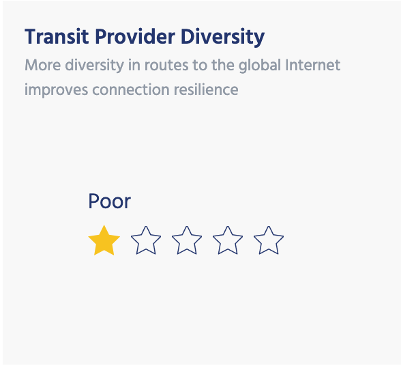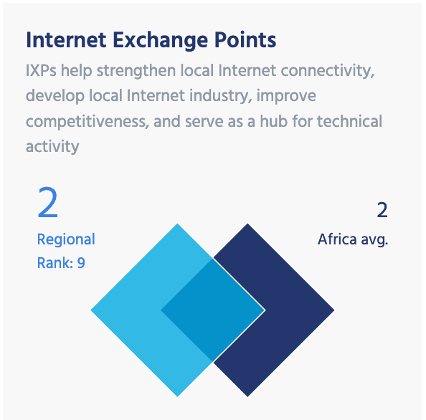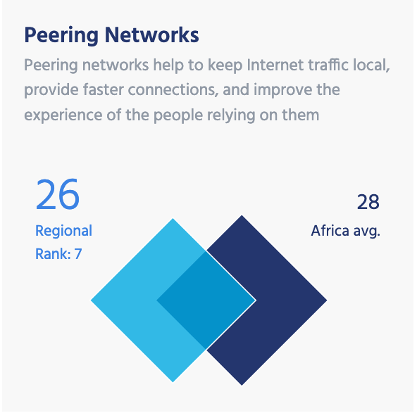On 14 March, many African countries experienced Internet outages as several undersea cables serving the continent suffered failures. Although the cause of the failures is still unclear, the negative impact on Internet users is prominent.
Beyond annoyances, Internet users in these countries, including Liberia, South Africa, and Nigeria, and those in other countries using services hosted in the affected countries are facing challenges engaging in remote education and work, small businesses can’t complete international bank transfers, and mobile money orders aren’t working. It all adds up. Internet outages and shutdowns have real negative impacts on national economies.
For policymakers worryingly looking at the Internet outages in Africa and thinking about the risk to their own countries, it can be difficult to know where to start. One place is the Pulse Country Reports, which provide decision-makers with a view of critical Internet health indicators for more than 200 countries and territories.
For policymakers worried about Internet outages, there are a few critical measures on Pulse to consider: Transit Provider Diversity, Internet Exchange Points, and Peering Networks.
Transit Provider Diversity

Do the Internet networks in your country have a variety of ways to reach the rest of the global Internet?
Transit Provider Diversity measures the number of providers in a country that offer connectivity to the rest of the world. The more diverse the connectivity, mainly through separate international circuits and links, the more resilient the Internet will be against threats like cable cuts or other failures.
In short, high levels of Transit Provider Diversity can help a country lower the risk of experiencing Internet outages, such as the ones seen on 14 March in Africa.
Internet Exchange Points and Peering Networks

Is there enough physical infrastructure to allow local networks to exchange Internet traffic locally? Are local networks exchanging traffic with one another?
Internet Exchange Points and Peering Networks measures indicate a country’s ability to mitigate the impact of Internet outages by transit providers.
Internet Exchange Points (IXPs) are critical Internet infrastructure where local networks come together to connect and exchange local Internet traffic. Mobile operators, content delivery networks (CDNs), and Internet service providers can all come together at an Internet exchange point to exchange Internet traffic.

IXPs ensure that traffic between local senders and recipients uses cheap local connections rather than international transit links. This reduces costs and latency and can reduce the impact of transit provider failures. IXPs can also attract local caches for major content delivery networks, allowing access to content even when an international connection goes down.
Peering Networks is a measure of networks that peer at (interconnect with) IXPs in each country. More networks that interconnect with IXPs/one another improve redundancy, latency, and overall experience.
Improving Transit Provider Diversity and Network Peering
Governments play an essential role in improving their country’s Internet resilience.
There are several actions that policymakers who are concerned about experiencing Internet outages like the one that impacted much of Africa on 14 March can take to mitigate such risks. Most of these actions (below) are economic rather than technical and focus on improving incentives for other stakeholders to help improve resiliency.
Improving Transit Provider Diversity
- Improve policy and legal environment. Create an enabling environment by adopting policies that promote and facilitate network interconnection. The environment should encourage network operators to build, lease, or buy the necessary infrastructure to connect with others (including across borders) and to make voluntarily negotiated peering and transit agreements with commercially viable terms and conditions at interconnection points of their choice.
- Strengthen competition. Remove government-imposed monopolies on Internet infrastructure and traffic exchange, including monopolies on cable landing stations, international gateways, cross-border capacity, and local/regional backbones. Related policies should also promote domestic and foreign Internet infrastructure and services investment.
- Foster international interconnection. Work with regional counterparts and regional organizations to implement regional policy frameworks that support cross-border Internet interconnection and advance the alignment of cross-border licensing regimes.
To learn more about how governments can help improve transit provider diversity, read the Internet Society’s policy brief on interconnection.
Improving Local Interconnectivity
- Improve policy and regulatory environment. Support IXPs and speed their development with information and communications technology (ICT) policy objectives that promote an enabling environment for interconnection via policy and regulatory frameworks. Provide as much policy and regulatory transparency as possible to encourage regional and international entities to participate in the local interconnection and peering environment.
- Economic incentives and stimulate demand. Promote local investment opportunities via tax holidays and reduced duties on the equipment needed to build IXPs and operator networks (for example, switches, routers, and servers). Provide clear guidance about local business rules and practices. Motivate key utility providers, including those in banking, electricity, and gas sectors and important government service entities, to localize their service hosting and establish connections with the local IXP infrastructure, where all/most local operators converge for peering. Provide regulatory assistance and facilitate capacity-building initiatives to help educate stakeholders within utility services about the advantages of local hosting.
- Build relationships with peering and technical communities. Foster relationships with Peering and technical communities (Network Operation Groups, NOGs) to learn more about local interconnection environments and the sustainability and technical management of an IXP.
To learn more about how governments can help improve network peering in their countries, read the Internet Society’s policy brief on Internet exchange points.


